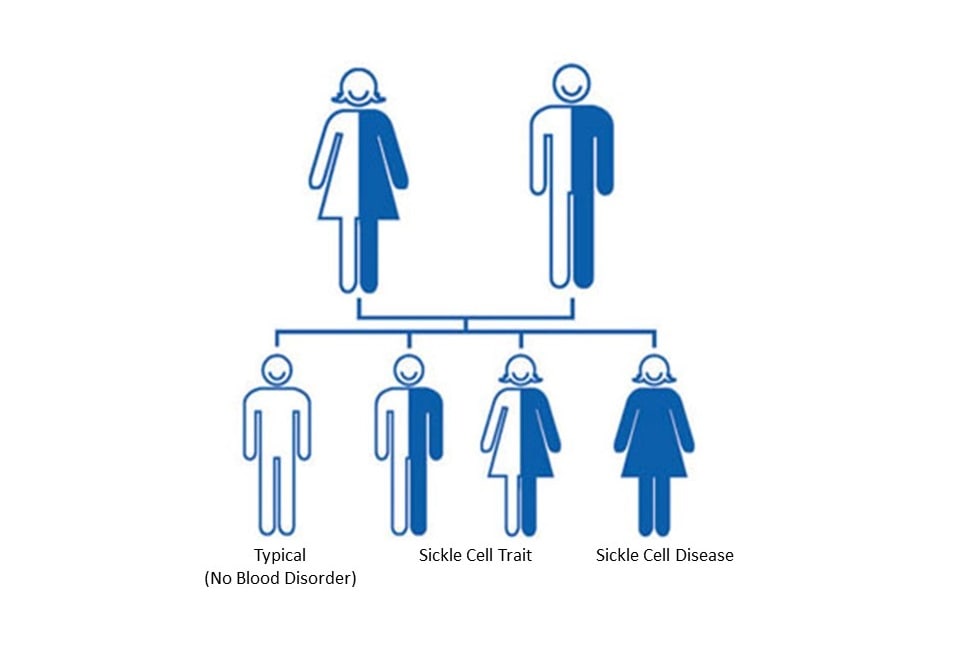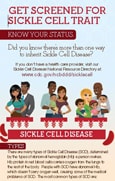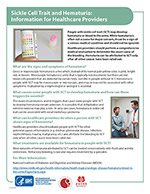What is Sickle Cell Trait?
Did you know there’s more than one way to inherit sickle cell trait? Learn how it is inherited » [PDF – 3 MB]
People who inherit one sickle cell gene and one normal gene have sickle cell trait (SCT). People with SCT usually do not have any of the symptoms of sickle cell disease (SCD), but they can pass the trait on to their children.
How Sickle Cell Trait is Inherited
- If both parents have SCT, there is a 50% (or 1 in 2) chance that any child of theirs also will have SCT, if the child inherits the sickle cell gene from one of the parents. Such children will not have symptoms of SCD, but they can pass SCT on to their children.
- If both parents have SCT, there is a 25% (or 1 in 4) chance that any child of theirs will have SCD. There is the same 25% (or 1 in 4) chance that the child will not have SCD or SCT.

Diagnosis
SCT is diagnosed with a simple blood test. People at risk of having SCT can talk with a doctor or health clinic about getting this test.
Complications
Most people with SCT do not have any symptoms of SCD, although—in rare cases—people with SCT might experience complications of SCD, such as pain crises.
In their extreme form, and in rare cases, the following conditions could be harmful for people with SCT:
- Increased pressure in the atmosphere (which can be experienced, for example, while scuba diving).
- Low oxygen levels in the air (which can be experienced, for example, when mountain climbing, exercising extremely hard in military boot camp, or training for an athletic competition).
- Dehydration (for example, when one has too little water in the body).
- High altitudes (which can be experienced, for example, when flying, mountain climbing, or visiting a city at a high altitude).
More research is needed to find out why some people with SCT have complications and others do not.
SCT and Athletes
Some people with SCT have been shown to be more likely than those without SCT to experience heat stroke and muscle breakdown when doing intense exercise, such as competitive sports or military training under unfavorable temperatures( very high or low) or conditions.
Studies have shown that the chance of this problem can be reduced by avoiding dehydration and getting too hot during training.
People with SCT who participate in competitive or team sports (i.e. student athletes) should be careful when doing training or conditioning activities. To prevent illness it is important to:
- Set your own pace and build your intensity slowly.
- Rest often in between repetitive sets and drills.
- Drink plenty of water before, during and after training and conditioning activities.
- Keep the body temperature cool when exercising in hot and humid temperatures by misting the body with water or going to an air conditioned area during breaks or rest periods.
- Immediately seek medical care when feeling ill.


